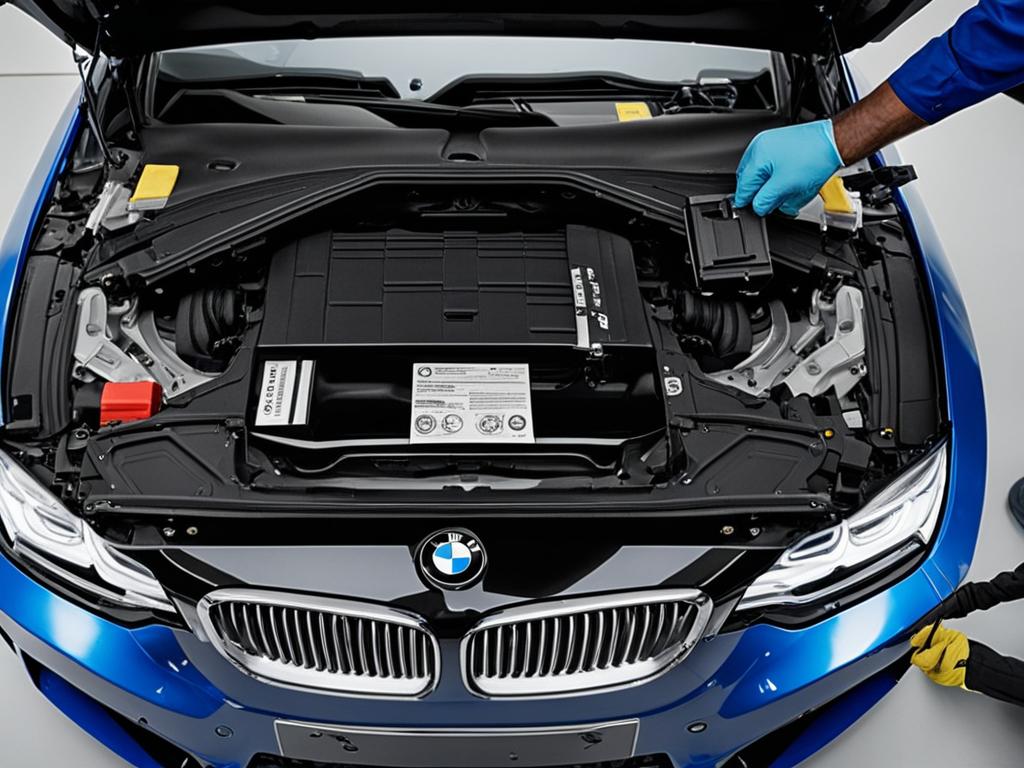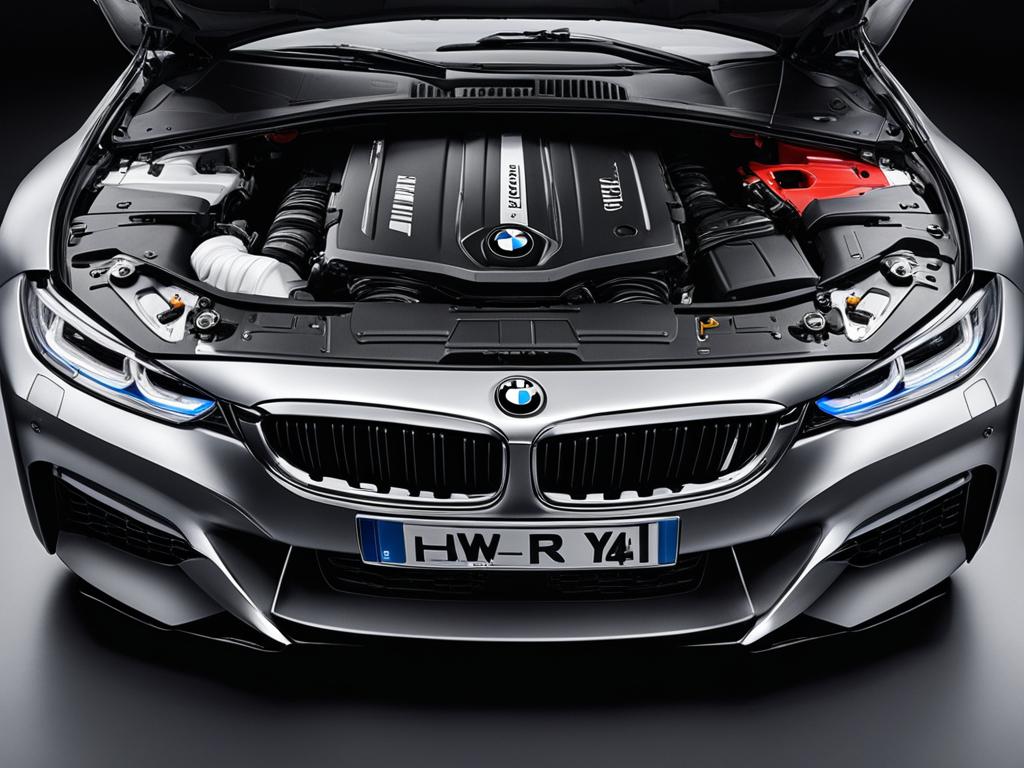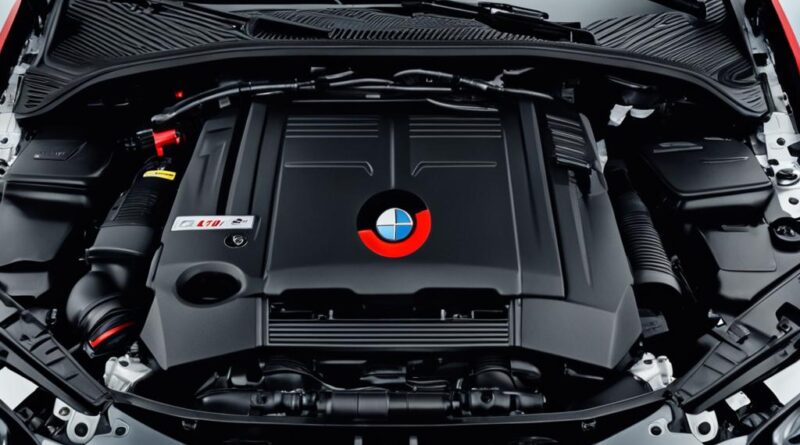Locate BMW Battery: A Quick Guide
Welcome to our quick guide on locating the battery in a BMW. Whether you’re looking to replace your BMW battery or simply want to know its position for maintenance purposes, understanding the battery’s location is essential. In this guide, we will help you find the battery in your BMW and provide some useful tips along the way.
Key Takeaways
- The battery in most BMW models is generally located inside the trunk.
- Look for the battery on the trunk floor or on the right side.
- BMW battery replacement and registration are important for maintaining the longevity of your vehicle.
- It’s recommended to let an expert handle the battery registration process.
- Choosing the right battery type and specifications is crucial for optimal performance.
Choosing the Right Battery for Your BMW
When it comes to replacing the battery in your BMW, it’s important to choose the right one to ensure optimal performance and longevity. In the past, conventional wisdom suggested finding a battery with similar specifications to the old one. However, thanks to the battery registration process offered by BimmerTech, you have more flexibility in selecting a battery that may have different specifications but can be adjusted accordingly.
But before diving into the registration process, it’s crucial to identify which type of battery your BMW currently has. There are three main types: liquid lead acid, gel lead-acid, and AGM (Absorbent Glass Mat) batteries. Each type requires different handling and maintenance.
- Liquid lead acid batteries: These batteries have flooded cells and can be easily identified by the caps on top. They are the most common type found in most BMWs.
- Gel lead-acid batteries: Gel batteries have flat tops without any caps or filling ports. They are designed with a gel-like electrolyte, which makes them less prone to leakage and capable of performing well in harsh conditions.
- AGM batteries: AGM batteries are considered the safest option as they are lead-acid dry-cell batteries that are fully sealed. They have a high power density and can deliver superior performance.
Understanding the type of battery your BMW currently has will help you make an informed decision when selecting a replacement. If you’re unsure, consult your vehicle’s manual or reach out to a professional for guidance.
BMW Battery Replacement Procedure
Replacing the battery in your BMW is a straightforward process that you can accomplish on your own. Follow these steps to successfully replace your BMW battery:
- Start by turning off the ignition and locating the battery in the trunk.
- Remove the liner covering the battery to gain access.
- Disconnect the negative battery terminal by loosening the clamp using a wrench or socket. Make sure to disconnect the negative terminal first to avoid any electrical mishaps.
- Next, disconnect the positive battery terminal using the same method as above.
- Remove the brackets holding the battery in place. These brackets can usually be unscrewed or unclipped, depending on your BMW model.
- Carefully lift out the old battery, making sure not to damage any surrounding components.
- Before installing the new battery, it’s a good idea to take pictures of the old battery’s model number and technical data for future reference.
- Install the new battery securely in the same position, making sure it is oriented correctly.
- Reinstall the brackets to hold the battery in place.
- Connect the positive battery terminal first, followed by the negative terminal, ensuring that they are tightly secured with the wrench or socket.
- Finally, clean the battery posts using a battery terminal cleaner and a wire brush. This will help ensure a good electrical connection.
Now, your new BMW battery is successfully installed, and your vehicle is ready to go.

Note: In case you are unsure of the battery replacement process, it is recommended to consult the BMW user manual or seek professional assistance to avoid any damage to your vehicle.
Understanding BMW Battery Registration
BMW battery registration is a crucial step in maintaining the proper functioning of your vehicle’s charging system. It involves updating your BMW with information about the installation of a new battery. This registration process should be performed every time you change the battery in a 2002 or newer BMW model.
The engine control module (DME) needs to be informed about the presence of a new battery so that it can adjust the charging levels accordingly. Failure to register the battery can lead to various electrical problems and premature battery failure. By registering the battery, you ensure optimal performance and longevity.
During the registration process, the relevant information about the new battery, such as its specifications and capacity, is coded into the BMW’s system. This coding allows the vehicle to recognize the battery and adapt its charging behavior accordingly. Without proper battery registration, your BMW’s charging system may not function as intended.
Not registering your BMW battery can have several consequences:
- Electrical Problems: Failure to register the battery may result in issues with the vehicle’s electrical system. This can lead to malfunctions with important components such as the alternator or power distribution module, affecting various aspects of your BMW’s performance.
- Premature Battery Failure: Improper charging levels can put excess strain on the battery, leading to premature failure. Without battery registration, the BMW’s charging system may not deliver the appropriate voltage and current, reducing the battery’s lifespan.
- Diagnostic Challenges: If electrical problems arise in your BMW, not having a registered battery can make it more difficult for mechanics and technicians to diagnose the root cause of the issue. Lack of information regarding the battery’s specifications can complicate the troubleshooting process.
Overall, BMW battery registration is a vital step in ensuring the longevity and optimal performance of your BMW’s electrical system. It allows the vehicle’s charging system to adapt to the new battery and prevents potential issues that may arise from an unregistered battery.
Proper battery registration should be performed by trained technicians or using compatible OBD-II scanners or diagnostic devices. This helps guarantee that the coding process is conducted accurately and effectively, ensuring seamless integration between the new battery and your BMW’s system.
Battery Registration and Coding
Registering and coding the battery in your BMW is an essential step to ensure optimal performance and prevent electrical issues. This process involves updating your vehicle’s system with information about the newly installed battery. Here’s a step-by-step guide on how to register your BMW battery and the tools you’ll need:
How to Register BMW Battery
To register your BMW battery, you’ll need a compatible OBD-II scanner or diagnostic device. Follow these steps:
- Connect the OBD-II scanner to the diagnostic port in your BMW. The port is usually located near the driver’s side footwell.
- Turn on the ignition without starting the engine.
- Select the battery registration option on the scanner’s menu.
- Follow the prompts on the scanner’s screen to complete the registration process.
Required Tools for Battery Registration
Before starting the battery registration process, make sure you have the following tools:
- Compatible OBD-II scanner or diagnostic device
- Owner’s manual or vehicle information to locate the diagnostic port
- Camera or smartphone to take pictures of the new battery’s model number and technical data
Cost of BMW Battery Coding
The cost of BMW battery coding can vary depending on several factors, such as the location and the service provider. If you’re not comfortable performing the coding yourself, you can schedule a remote coding session with a technician. In general, purchasing a battery registration service and performing the coding yourself is more affordable than getting it done at a car shop.
Example of Battery Coding
To give you a better idea of the battery coding process, here’s an example:
Technician: “Please connect the OBD-II scanner to the diagnostic port in your BMW.”
Owner: “Done.”
Technician: “Turn on the ignition without starting the engine and select the battery registration option on the scanner’s menu.”
Owner: “Okay, I see the battery registration option. What’s next?”
Technician: “Follow the prompts on the screen, and the registration process will be complete.”
Owner: “Great! Thank you for your assistance.”

By following the battery registration process and using the necessary tools, you can ensure that your BMW’s charging system is properly calibrated with the new battery. This helps optimize the battery’s performance and prevents any potential issues in the future.
Tips for BMW Battery Replacement
When replacing your BMW’s battery, there are a few tips to keep in mind to ensure a smooth and successful replacement process.
- Turn off the ignition and remove the key: Before starting the battery replacement, always turn off the ignition and remove the key. This will prevent any electrical accidents or interference during the process.
- Use a trickle charger: If possible, use a trickle charger to maintain power to your BMW during the battery replacement. This will help prevent any loss of settings or data in your vehicle’s electronic systems.
- Double-check the specifications: Before purchasing a new battery, double-check that it matches the specifications of the old one. Pay attention to the battery type, capacity, and size to ensure a proper fit and optimal performance.
- Prevent accidental contact: Take precautions to prevent accidental contact between the positive battery terminal and any metal parts. This can cause a short circuit or electrical damage.
- Secure the battery properly: When installing the new battery, make sure to properly secure it with the brackets. This will prevent any movement or vibrations that may affect the battery’s performance.
- Clean the battery posts: Before connecting the battery terminals, clean the battery posts to ensure a good electrical connection. Use a battery terminal cleaner or a mixture of baking soda and water to remove any corrosion.
- Maintain regular battery maintenance: To prolong the life of your BMW’s battery, it’s important to perform regular maintenance. This includes checking the battery voltage, cleaning the terminals, and ensuring proper charging levels.
- Pay attention to signs of a failing battery: Be aware of the signs of a failing battery, such as slow cranking, dim lights, or frequent jump-starts. If you notice any of these signs, it may be time to replace your BMW’s battery.
By following these tips and taking proper precautions, you can successfully replace your BMW’s battery and maintain its performance and longevity.
Aftermarket Batteries for BMW
While OEM BMW batteries are widely recommended for their longevity and compatibility, aftermarket batteries can also be used in BMWs as long as they meet the recommended specifications. It’s crucial to ensure that any aftermarket battery chosen is compatible with the specific BMW model, ensuring proper fit and performance.
Compatibility of Aftermarket Batteries with BMW
When considering aftermarket batteries for your BMW, it’s essential to verify that the battery aligns with the manufacturer’s recommended specifications. This includes factors such as voltage, capacity, and dimensions. Furthermore, it’s advisable to opt for reputable aftermarket battery brands that are known for their quality and reliability.
Best Battery for BMW
While the term “best” battery can vary based on individual needs and preferences, several aftermarket battery options have received positive reviews from BMW owners. These include brands such as Bosch, Varta, and Exide, which offer reliable performance and compatibility with BMW vehicles. However, it’s crucial to conduct thorough research and consult professional advice to identify the most suitable battery for your BMW model.
Charging Voltage for BMW Battery
Battery charging voltage for BMW vehicles typically ranges from 13 volts to 14.3 volts. This voltage range is essential for maintaining the battery’s optimal charging and performance. It’s crucial to measure and ensure that the charging voltage falls within this range to prevent undercharging or overcharging, which can lead to battery damage or decreased lifespan.
Charging Malfunction in BMW
If you experience charging malfunctions in your BMW, such as inconsistent charging or rapid battery drain, it may indicate a problem with the alternator or battery. It’s recommended to have the charging system inspected by a qualified technician to diagnose and resolve any underlying issues.

Key Takeaways
- Aftermarket batteries can be used in BMWs but ensure they meet the recommended specifications.
- Research and choose reputable aftermarket battery brands for quality and compatibility.
- Bosch, Varta, and Exide are popular aftermarket battery brands for BMWs.
- Charging voltage for a BMW battery typically ranges from 13 volts to 14.3 volts.
- Charging malfunctions may indicate alternator or battery issues.
Conclusion
Replacing and registering the battery in your BMW is a crucial maintenance task that is vital for the smooth and reliable operation of your vehicle’s electrical system. By carefully following the proper procedures and using compatible tools, you can successfully replace the battery yourself and save on labor costs.
Battery registration is an essential step in optimizing the charging system of your BMW and preventing premature battery failure. It ensures that the engine control module (DME) recognizes the new battery and adjusts the charging levels accordingly, avoiding potential electrical problems in the future.
Regular maintenance and attention to your BMW’s battery are key to maintaining its lifespan and optimal performance. By monitoring its condition, cleaning the battery posts regularly, and addressing any signs of a failing battery promptly, you can help extend its life and avoid unexpected breakdowns.
FAQ
Where is the battery located in a BMW?
In most BMW models, the battery can be found inside the trunk, either on the trunk floor or on the right side.
How do I choose the right battery for my BMW?
When choosing a battery for your BMW, consider the type of battery (liquid lead acid, gel lead-acid, or AGM) and find one with similar specifications to the old battery. With battery registration, the battery can be adjusted to the new specifications.
How do I replace the battery in my BMW?
To replace the battery in your BMW, start by turning off the ignition and locating the battery in the trunk. Remove the battery liner and disconnect the negative and positive terminals. Remove the brackets and lift out the old battery. Install the new battery, secure it with brackets, and reconnect the terminals. Clean the battery posts and ensure proper connection.
What is BMW battery registration?
BMW battery registration is the process of updating your vehicle with information that a new battery has been installed. It is important for the proper functioning of your BMW’s charging system, and failure to register the battery can lead to electrical problems and premature battery failure.
How do I register my BMW battery?
Battery registration should be done using a compatible OBD-II scanner or diagnostic device. It is recommended to purchase a battery registration service and schedule a remote coding session with a technician. During the registration process, the technician will guide you through the steps.
What are some tips for BMW battery replacement?
When replacing your BMW’s battery, always turn off the ignition and remove the key. If possible, use a trickle charger to maintain power. Double-check that the new battery matches the specifications of the old one. Take precautions to prevent accidental contact between the positive terminal and metal parts. Secure the battery properly and clean the battery posts before connecting the terminals.
Can aftermarket batteries be used in BMWs?
Aftermarket batteries can be used in BMWs, but it’s important to ensure they meet the recommended specifications. While OEM BMW batteries are generally recommended for longevity and compatibility, there are aftermarket options available that can work well.
What is the charging voltage for a BMW battery?
The charging voltage for a BMW battery typically ranges from 13 volts to 14.3 volts. If there is a charging malfunction, it can indicate a problem with the alternator or battery.




